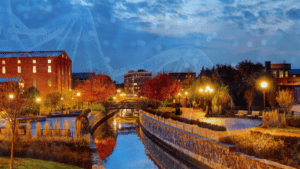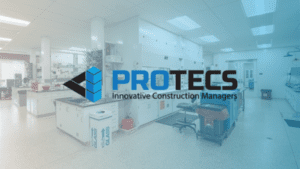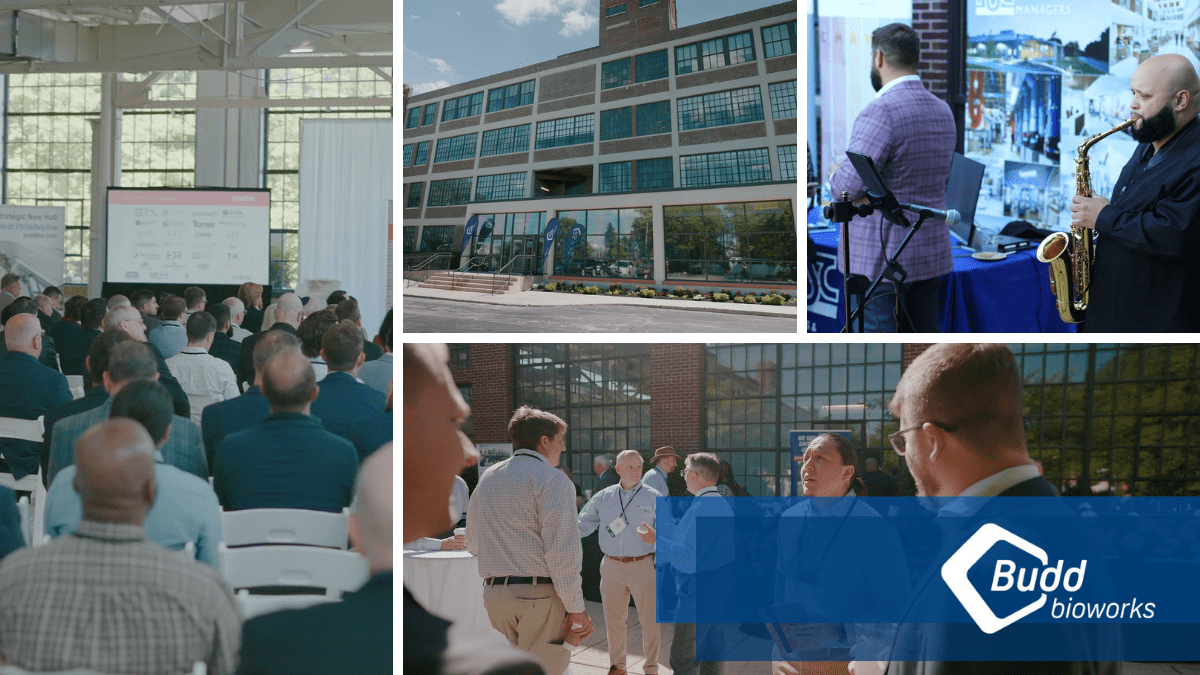
Life Science Leaders Share Optimism, Discuss Opportunities at Philadelphia Life Science Summit
More than 600 leaders in the life science industry recently converged in Philadelphia for a Life Sciences Summit, organized by Bisnow. The event was held at Budd Bioworks, the former metal plant and future strategic destination for biotech manufacturing. This reclaimed facility, which promises to bring life back to a once-thriving community, was the ideal venue for the discussion of the state of the Philly life sciences scene.
The buzz around the summit was one of enthusiasm as Philly strives to join the top tier of life sciences hub in the country. The life sciences scene in Philly is growing and may soon be approaching an inflection point preceding rapid growth, reminiscent of 1990s Boston. The Summit examined the dynamic Philly landscape as a whole, both celebrating recent successes and talk about the hurdles that must be overcome for the ecosystem to truly thrive.
Institutions and Cost: Fundamental Philly Advantages
World-class educational and healthcare facilities provide a strong foundation for Philly life sciences. Gregory Reaves, founder and co-owner of Mosaic Development Partners, described the importance of the University of Pennsylvania: “What you’re seeing today – the genesis of this started years ago… You have to think about when the seeds were planted and the strength of those seeds. UPenn has been the engine of those seeds… The leading research and leading talent pool have all come together with years of investment; you see that this area really is ripe for future discoveries and growth.”
UPenn and other “eds and meds” institutions in the Philadelphia region have been at the forefront of the development of cell and gene therapies, the heart of Philly life sciences. Innovations developed within these foundational institutions, including UPenn and CHOP, paved the way for the present successes and optimism for the future. The city is full of institutions that attract diverse investors and spur growth, bringing in research money and spinning off companies.
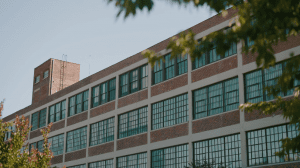
The footprint of big pharma companies, including GSK, BMS, and J&J, enhances the scientific/industrial ecosystem beyond the eds and meds. Reaves stated that “You have a huge base of talent that understands the pharmaceutical industry, especially as it comes to commercialization… When you move from scientific discoveries to commercialization, that is incredibly difficult. To be able to have the talent here that can work in that space is really significant.”
This mix of talent has positioned Philly as a leader in the building of integrated, collaborative communities designed to spark innovations and bring them through the life cycle. The Center for Breakthrough Medicines in nearby King of Prussia is a leading Contract Development and Manufacturing Organization that has formed multiple lucrative partnerships to bring innovative cell and gene therapies to clinical trial and to market. University City Science Center in the center of downtown Philly is the oldest urban research park in the United States and similarly collaborates with life science companies to support innovations, to bring products to market, and to expand and diversify workforce pipelines.
Cost is another intrinsic draw. As noted by Audrey Greenberg, Co-Founder of the Center for Breakthrough Medicines, innovators and investors are seeking quality, not just the cheapest area. But she and others emphasized that Philly has an abundance of quality space at a relatively low cost, which is certainly a draw to start-ups. A relatively low cost of living in a city rich with history and culture also provides an incentive for top talent to not only come to Philly, but remain in the area.
Talent and Space: Room for Growth
Summit panelists described the talent pool as another fundamental strength of the Philly region. The sheer volume generated by the nine nearby medical schools and the abundance of science-focused regional undergraduate institutions fuel the industry with important lifeblood.
It’s no secret that there is intense competition for talent among the life science hubs. While Philly has historically been good at retaining the talent pool, such competition can draw talent away. According to Ryan McDonough, Senior Vice President, Project Operations at DPS Group, “Philadelphia can take advantage… A lot of these other hubs are struggling to keep the science that has been developed there. Philadelphia’s got a lot going for it. We have a lot to do, but we’re also doing a pretty good job of making it better.” The rich history and culture of Philly, along with the relatively low cost of living, can provide some draw, but effort must be taken on multiple levels to continue to maintain local talent and attract newcomers.
The talent also needs effective room to work. The real estate development leaders at the Summit pointed out that there are certainly positives for Philly with regard to space. Incubator space remains in high demand, but construction is moving rapidly to meet that demand. In fact, Joseph Fetterman, Executive Vice President of Healthcare and Life Sciences at Colliers, said that “The amount of incubation space grew by 300% in the Philadelphia region over the last nine months, and it’s still growing.”
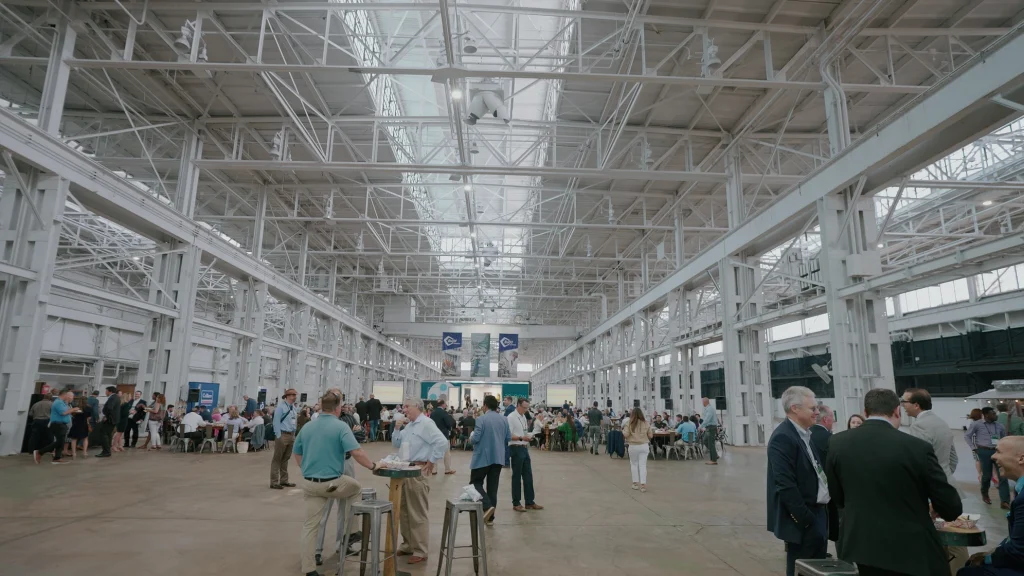
On the other end of the life cycle, the Budd campus itself is testament to the rapid development of world-class manufacturing facilities and to the focus on ecosystems. The campus once housed a powerhouse of manufacturing that served multiple industries through two world wars and the great depression. According to Michael Davis, Principal at The Plymouth Group and leader of the facility’s repurposing, the abandoned steel plant “sort of obviously wanted to be a manufacturing facility.”
Budd developers did not limit their vision to one aspect of the product life cycle, however. The facility will also include multiple kinds of flexible spaces designed to nurture innovation and commercialization. For example, Budd will even be involved in workforce development through its new agreement to collaborate on biologics training with the Jefferson Institute for Bioprocessing.
More space is still needed, however. Demand is outstripping supply, and that can lead to a loss of innovation if the city cannot keep up. Diversification in different kinds of space is also needed. Panelists noted a deficit of graduation space needed by early-stage companies who have outgrown their incubators. There is also a growing need for facilities that can accommodate in-house manufacturing to speed the movement from innovation through trials and to market.
With regard to talent and space, flexibility and collaboration are key. Summit panelists emphasized the need to foster an ecosystem. Lots of talent and lots of space is needed, but growth acceleration depends on ecosystems built on diversity and cooperation.
The Challenges Ahead
While Summit attendees were largely optimistic about the future of Philly as a life science hub, several important obstacles were discussed. Macroeconomic uncertainties were a cloud over the Summit. Greenberg described the influence of the sluggish economy, especially for startups. “Capital markets clearly have taken a bit of a turn. However, if you’re an innovator company that’s looking to raise capital and you have pipeline assets that have shown proven ability and are further along in the development timeline, you’re able to raise capital at valuations that are consistent with where they have been in the past. However, if you’re a riskier asset or if there’s a little bit more uncertainty, there is a flight to quality right now, so it can be more challenging.”
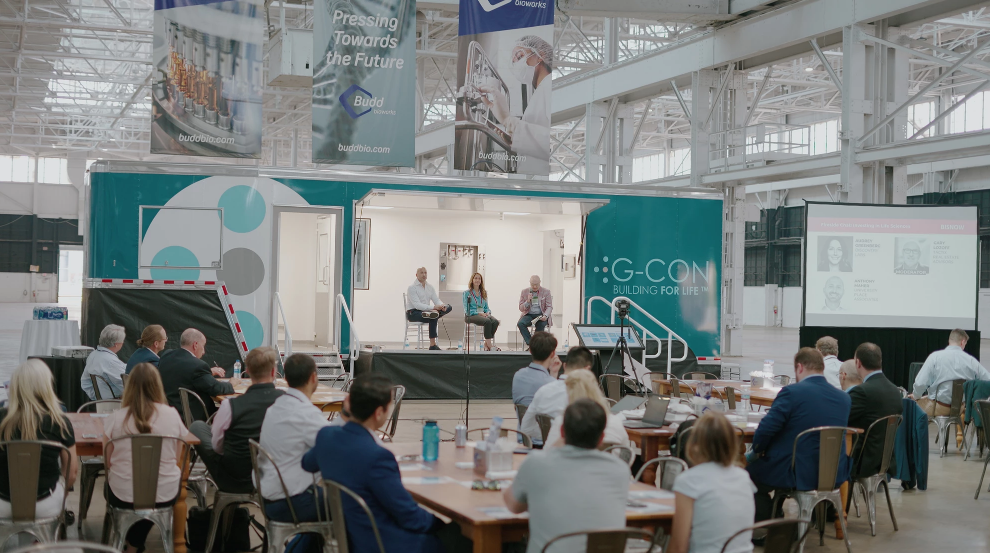
Another pressing macroeconomic issue is, not surprisingly, supply chain disruptions. Orders that were once fulfilled in months now may take years to materialize. Building in such an environment takes planning, but it also takes nerves of steel. Long lead times mean risk and increasing costs and potential lowering of flexibility.
Summit panelists also emphasized the importance of state and local governments in the success of a growing industry. Other states with established or aspiring life sciences hubs, including Maryland, Massachusetts, and Illinois, were lauded for their efforts at attracting life science companies with standard and creative financial incentives and for aggressively marketing their regions.
Tiffany Wilson, President and CEO of University City Science Center, also explained that “this industry is a long-game industry. If we want to talk about attracting investment, creating jobs, and getting these innovations through to commercialization and scale, it can take 10, 20, 30 years. That’s well past election cycles. The other states have invested that long-game mentality and the dollars to back it up to really bring and incentivize that collaboration in a region.” In an increasingly competitive landscape, Philadelphia, Pennsylvania, and the region will need to collaborate in order to produce long-term sustainable growth.
It’s clear from this Summit that Philly has the foundation of a top-tier life sciences hub, but it faces still competition from other markets and potential headwinds from macroeconomic forces. Fortunately, a spirit of collaboration was evident at the Life Sciences Summit. Speaking of Budd and also about the Philly market in general, Davis stated that “we don’t think of any of the projects in this neighborhood as being competitive. I think everyone in here wants everybody to win… We just want to see all kinds of spaces that serve all kinds of needs across the life cycle.”




